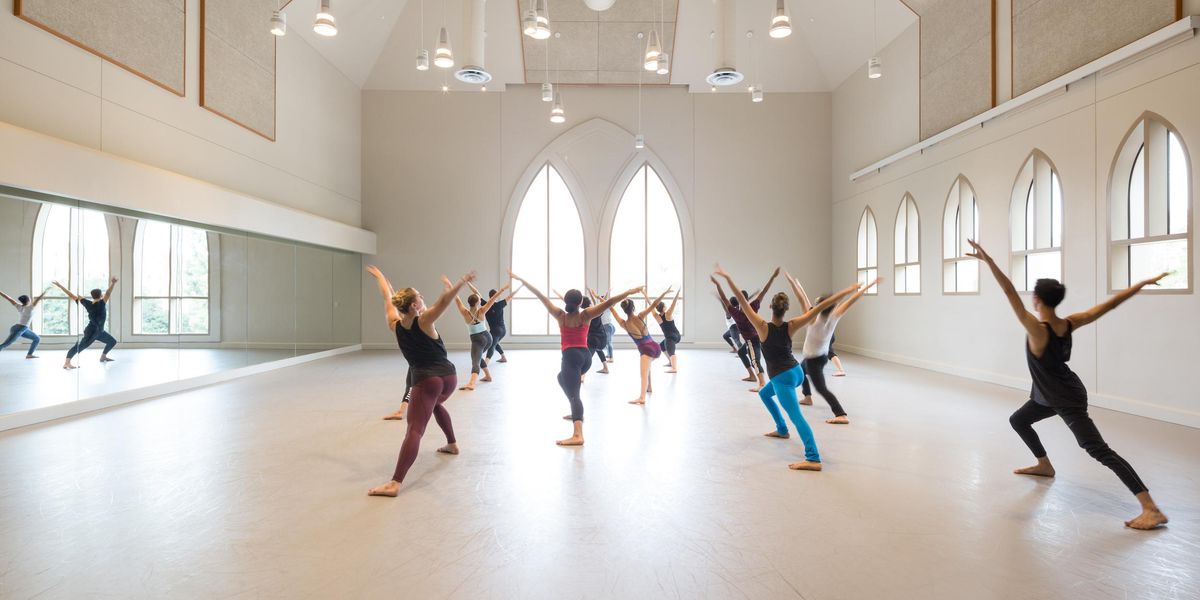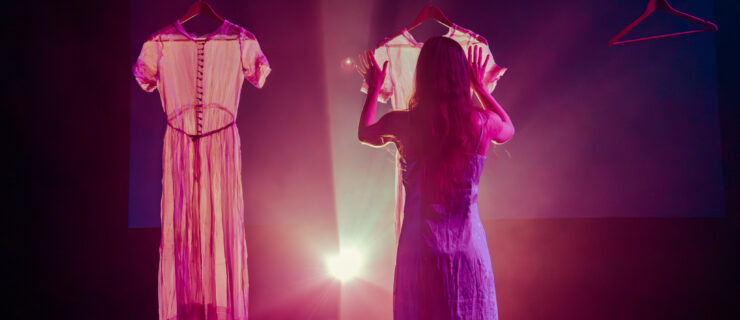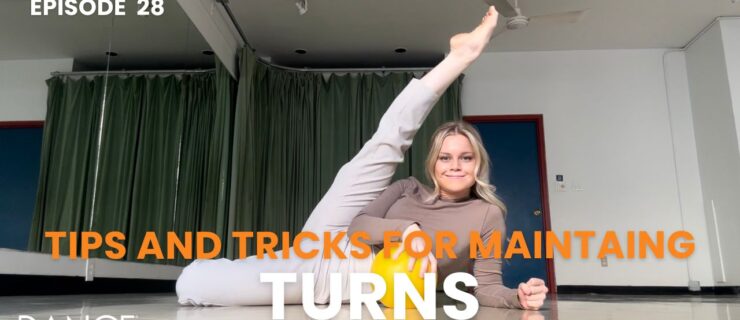Only Yesterday
Dance Theater Workshop celebrates 40 years as a choreographic incubator and artists’ services organization.
Dance Theater Workshop was born in 1965. The mid ’60s was a fertile period for the New York dance world. Many artists were pushing the boundaries of what is considered dance. The National Endowment for the Arts and The New York Council on the Arts had just come into being and we were all getting a little bit of the pie. Judson Memorial Church was seeing its second wave of rebels in Meredith Monk, Kenneth King, and Twyla Tharp. Another venue, the Cubiculo in the West 50s, was presenting young dance artists in shared programs. And at Clark Center on Eighth Avenue, not only could you present your work, but you could take technique class with Alvin Ailey and choreography with Anna Sokolow. At Merce Cunningham’s studio on the corner of Sixth Avenue and 14th Street, pieces of plaster from the ceiling were always falling on us during class. We all were busy making new work and we were all, literally, dancing in the streets.
Dance Theater Workshop, now a major presenter and producer of dance, is celebrating 40 years. With renovated and expanded digs in Chelsea, DTW has two beautiful studios, a 200-seat theater, and a whole floor for offices and storage space. It seems to be continually sprouting new projects, the latest being the College Dance Program and the Creative Residency Program. The only dance presenter that is also a national service organization, DTW is forging ahead into the new century.
It all began with Jeff Duncan, who was dancing with Anna Sokolow and making his own choreography. He moved into a former dress factory on West 20th Street and fixed it up as a residence for himself with a small, 20/’ by 15/’ dance space. Along with fellow Sokolow dancer Jack Moore, he began using the space for working on choreography. Art Bauman, a Juilliard grad, joined them, and DTW quickly became a place for choreographers to produce their works on a small scale. Performances were scheduled in a weekly series, so the pieces could evolve over time (as opposed to the once-a-year concerts at the 92nd Street Y that reigned in the 1950s).
Looking back, most of the work seemed to embody subtext and narrative—something of the human soul. And all us souls were crowded knee to knee, into a tiny dressing room separated from the performance area by a thin curtain. No talking, no coughing, no laughing.
I remember Art Bauman directing bulk mailing by putting the zip code numbers around the periphery of the studio. We would walk on diagonals crisscrossing the space to put our flyers in the right place—quite a dance. Art also designed the flyers, rubbing on each word, letter by letter.
After 10 years, the Workshop outgrew Jeff’s tiny loft. Around the corner at 219 West 19th Street was a two-story building. The first floor was a cavernous garage that sold and repaired car tires. On the second floor, Jerome Robbins had studios for his American Theater Lab, where he was experimenting with new work. When Robbins approved our use of ATL for a series of performances, we were in dance heaven—two studios, dressing rooms, and a large lobby! Jeff, Jack, and Art knew that if we were going to keep producing at ATL, they needed to hire an administrator.
David White came to New York from Wesleyan College with an interest in dance. He began taking class at DTW (Rudy Perez organized the “school”), dancing with Kathryn Posin, and helping her with fundraising. David had a quick wit and a vision—and a facility for writing grant proposals. When he was hired by Jeff as executive director in 1975, the energy started to flow double-time.
Under David’s aegis, DTW grew into a national service organization, a larger showcase for dance, and a player on the international dance scene. It helped develop the careers of many choreographers including David Gordon, Bebe Miller, Susan Marshall, and Victoria Marks. With enormous verve, David began the many-hatted roles he would play in the next couple decades, including becoming a national spokesperson for dance. He and his growing staff, with the help of a board of directors, developed programs such as Split Stream, the Bessie Schönberg/First Light Commissioning Program, and the Bessie Awards. He also established the National Performance Network (NPN), a network of small theaters that produce dance across the country; the Suitcase Fund, which enables U.S. artists to teach and perform in Eastern Europe and other areas; and Public Imaginations, which provides arts access to at-risk and underserved groups.
The next 25 years were amazingly productive. There were performances every week, an art gallery in the lobby, and international exchanges. Every afternoon when Ellen Robbins taught her classes for children, the halls and dressing rooms are filled with hops, skips and jumps.
David opened the door to other genres including a music series and a cabaret. In 1984, an unknown Whoopi Goldberg performed her character monologues there, and Mike Nichols saw her show and later produced her on Broadway. The actor and clown Bill Irwin also got his first East Coast gig there. DTW and David started to get awards: a Dance Magazine Award and a Village Voice Obie award in 1987, The NYC Mayor’s Award of Honor for Arts and Culture in 1992, the Annual Capezio Award and a Dance/USA Honor in 2000.
But again, DTW was growing out of its space. In 1995, it bought the building on 19th Street and began raising funds for a new building on that site. The old tire garage (which gave the staircase a rubbery fragrance) and the floor above were demolished, and a new building with eight additional floors for apartments (DTW had bought the air rights) was completed in 2002.
In 2003 David, feeling the pull of family, left New York. But associate producer Cathy Edwards, who had brought in many international groups, continued his cutting-edge programming. The next generation of artists who are making a splash at DTW include Miguel Gutierrez, Jeremy Wade, and Ann Liv Young. Although Cathy is leaving this year, executive director Marion Dienstag is carrying on the vision with a strong sense of responsibility. “People look to us not only to present the artists who are taking the deepest risks,” she said recently. “They are looking to us to validate the art form, expand audiences, and influence policy.” She talked about the holistic approach of DTW, meaning its commitment to education and technology, as well as performance.
DTW audiences are always filled with other dancers and choreographers. They can still count on seeing stimulating dance any time they venture to 19th Street and Seventh Avenue.
Barbara Roan is a dancer, teacher, and choreographer who was involved with DTW from 1967–1982. A former faculty member at Bennington College, she is now based in Vermont
.




